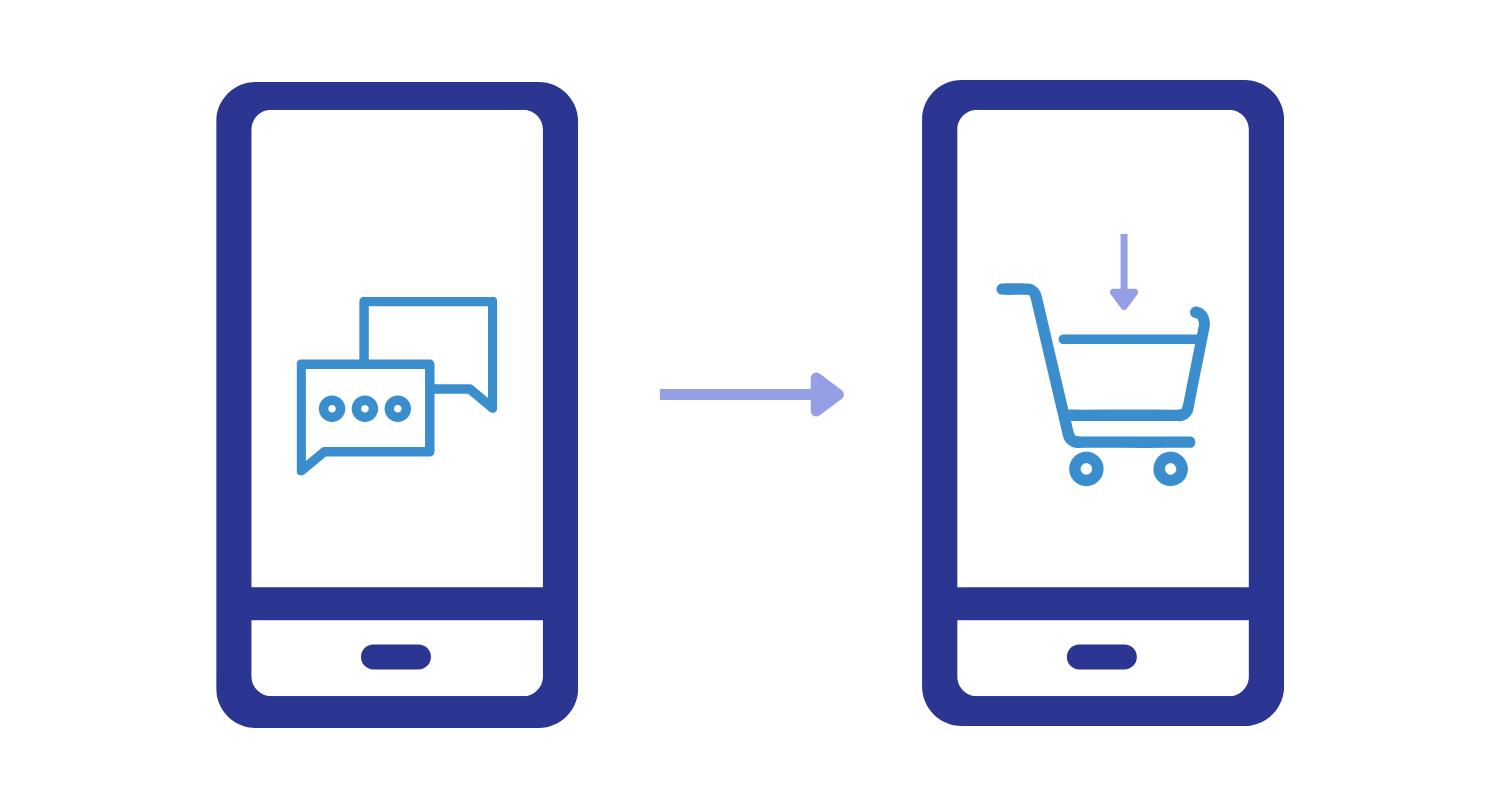
Social Selling: What is it and How Does it Work?
Kristyn Miller
Table of Contents
In the world we live in today, nearly everything takes place on social media. It’s where we get the news, where we socialize, where we keep tabs on public figures, and so much more. It is also where many businesses conduct a majority of their marketing and customer service efforts. In fact, things that were once considered a business strategy are now coined as social media strategies.
Over the past few decades, marketing tactics have shifted from phone book ads to billboards to emails and now, to social media posts. Many forward-thinking businesses have also replaced the “cold calling” method with what is known as “social selling.”
Social selling is a sales strategy that combines the relevance of social networking with the traditional sales process. As such, it allows sales professionals to build relationships with their target audience in an attempt to promote lead generation and potentially drive sales. In this blog post, our social media management experts at Kiopi will give you a rundown on the practice of social selling and how it can help boost your business.

What is Social Selling?
Social selling is one of the many sales techniques that has been created, or rather, altered, in light of the continued growth of social media platforms and the use of social media for business. The practice is similar to that of the once pertinent sales strategy of cold calling.
This outdated method saw sales reps personally calling a prospective customer in an attempt to pitch the sale of goods and/or services. It also includes sales reps going from door to door and delivering their pitch to potentially steer their audience toward the buying process.
As you can imagine, this sales strategy lacks the components of meaningful relationships and genuine conversation, and because of this, many sales reps were ultimately shut down by potential buyers before even making their point. Even though social selling is performed through a social network rather than face-to-face (or voice-to-voice) communication, it can still feel like a more personal approach for many.
This is because social selling, when done correctly, focuses more on social listening and building relationships, and forming new connections than it does on forcing sales pitches.
By utilizing the social media networks that most prospects are likely already familiar and comfortable with, sales reps can create more meaningful one-on-one relationships and nurture leads in a more gradual and less abrupt manner.
What is a Prospect?
When sales teams find relevant groups of people who may be interested in the goods or services that they are trying to sell, these potential customers may be known as “prospects.” These are typically people who fit the target audience and/or have expressed curiosity regarding the product being sold. They have not yet become a customer, but they seem to possess the resources and interests that indicate they may very well become a customer in the future.
How To Begin Social Selling
If you already have your brand active on social media networks such as Instagram and Facebook, you’ve already got your foot in the door when it comes to social selling.
Update Social Media Accounts
Before you go any further, however, be sure your social media profile is updated and showcases a strong professional brand or personal brand, ideally both. Your profile doesn’t necessarily have to be packed full of informative content, but it should appear professional and trustworthy to potential business leads.
Identify Target Audience
Next, find the best place to observe the conversation surrounding your product or industry. This means identifying where your target audience is most likely to be found and then meeting them there.
If you find prospects to be members of a certain group, join these groups and see what the conversation is all about.
If sales opportunities present themselves and you may be able to contribute to the conversation in a natural and organic way, feel free to do so. Just be sure not to make it sound like a cold call or sales pitch. Simply make it appear as though you have access to relevant content or information that may help fix a specific problem or answer a specific question and gently steer them toward your product or service.
Share Success Stories on Social Platforms
Sharing success stories among group members is another social selling strategy that may be beneficial to your business. Customers don’t just want to hear about a product from the eyes of the seller who is inevitably biased toward their own product. They want to hear what people like them, the average consumer, have to say about their experiences with said product.
Above all, for a successful social selling experience, it is important that you engage in active social listening.
Social listening refers to the social media monitoring, tracking, and analysis of discussions and trends surrounding your industry. This can be done by monitoring things like brand mentions and online conversations related to your business both on the web and on social media.
With the insights gathered from these social listening tools, you can improve future marketing decisions by identifying the best opportunities to act.

Social Selling Tips
Here are a few of our social selling tips for salespeople and social media management professionals:
Be Personable on Social Media Platforms
When engaging in the practice of social selling, it is important that your marketing team is not bombarding potential customers with information related to your product.
You don’t want your efforts to come across as “spammy” or impersonal. Otherwise, your audience may as well chalk it up to junk mail, and you can forget about successfully closing deals. You must approach the conversation in a personal and authentic way.
Meet Prospects Where They Are Currently In the Buying Cycle
One of the main benefits of social selling, as opposed to cold calling, is that you can meet new connections in a space they are comfortable.
No one likes to answer the door to a salesperson or pick up the phone to a sales pitch, especially when they have no apparent interest in the goods or services being sold.
On social media, however, you can find target audiences who already express interest in the type of product you are offering, and when you reach out, you allow them the courtesy of processing the information and responding when they feel most comfortable, if at all.
Drive Engagement
One of the best social selling techniques is to actively drive customer engagement. Reply to any mentions of or questions related to your personal or professional brand, make use of relevant hashtags and trends, use transparency when providing customer service, and utilize user-generated content to keep your audience engaged and involved.
Even if these efforts only reach existing customers, it may be enough to catch the attention of their mutual connections and increase your brand’s awareness.
Demonstrate Thought Leadership
Thought leadership is essentially the outward presentation of both you and your brand’s expertise in a particular subject matter.
When you show your knowledge and credibility in a certain field, particularly one relating to the product or service you are trying to sell, it generates a sense of trust from potential buyers. They want to know that the company they are buying from knows exactly what they are talking about so they can feel like confident decision-makers when choosing to purchase your product. Before diving headfirst into social selling, be sure to establish your credibility and experience among your professional network.
Measure Social Marketing Performance
There is really no way to know how your social selling strategy is going without the ability to analyze and track your performance.
There are several social media analytics tools that provide meaningful insights into the engagement rate of your audience. Kiopi, for example, allows you to see engagement, likes, reactions, comments, and shares, all of which are very telling when it comes to the successes or failures of your marketing efforts.
There are also social selling tools that are designed specifically for your social selling analytics, such as LinkedIn’s sales navigator, for example.
Using LinkedIn Sales Navigator
A major benefit of social marketing, as opposed to traditional marketing, is the ability to accurately measure your performance since social media measuring is the only way to know if your social campaigns are paying off.
There are many ways to track the metrics of your social media campaign, but LinkedIn actually created the first social selling tool that tracks and measures your social selling success. By using the LinkedIn Sales Navigator, a sales team may measure their efforts through what is called the Social Selling Index, or SSI.
The Social Selling Index appears as a scaled score (0-100) on your LinkedIn profile. The score you receive is measured based on your LinkedIn activity as it relates to the four pillars of social selling. As provided by LinkedIn, these pillars are:
- Establish Your Professional Brand – “Complete your profile with the customer in mind. Become a thought leader by publishing meaningful posts.”
- Find the Right People – “Identify better prospects in less time using efficient search and research tools.”
- Engage with Insights – “Discover and share conversation-worthy updates to create and grow relationships.”
- Build Relationships – “Strengthen your network by connecting and establishing trust with decision-makers.”
With these pillars in mind, LinkedIn will provide you with your SSI. Wherever you fall on the scale essentially describes your social selling success. The higher, the better.

Percentage Guidelines on LinkedIn
Here are some percentage guidelines provided by LinkedIn:
- 45% = Social sellers create 45% more opportunities than lower-ranking peers.
- 51% = Social sellers are 51% more likely to reach their sales goals.
- 78% = Social sellers outsell peers by 78%.
Should I Engage in Social Selling for My Business?
As social media management experts, we cannot recommend social selling enough. If you aren’t already on the bandwagon, odds are your competitors are, and they’re likely reaping the many benefits that come along with it. Adopting social selling can help you develop new connections and build long-term relationships with consumers, all while driving engagement to your brand and hopefully generating more conversions and sales.
Meet Your Sales Goals with Social Selling + Kiopi
In the grand scheme of things, the aspect of social selling and the social media management software Kiopi have a lot of things in common. For instance, both utilize the benefits of social platforms and focus on building relationships, improving your social presence, meeting your sales goals, and overall boosting your business.
By incorporating social selling into your marketing plan and benefiting from a social media management tool like Kiopi, you have access to everything you need to grow your brand online.

